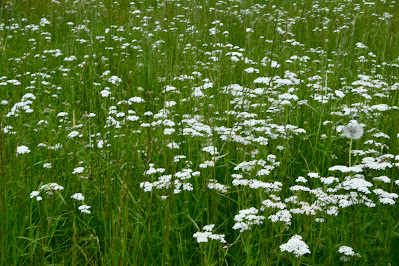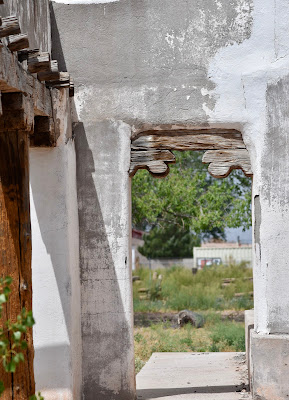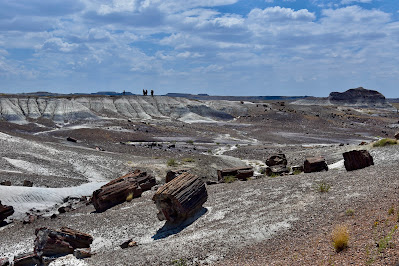You know you're in New Mexico . . .
. . . when the hotel breakfast includes beans and (plenty hot) green chile.
Backtracking to our day of arrival in La Villa Real de la Santa Fe de San Francisco de Asis, thankfully popularly known as Santa Fe . . .
. . . before even checking in to our hotel, we were off to visit the Deborah Allison Art Studio (https://www.deborahallisonstudio.com/) where we spent considerable time with Deb & Walt, and what a charming visit it was!
Her studio is delightful and so are they. For some reason, despite very disparate backgrounds and lives, we have discovered so much that we have in common. It all began when Chris was playing solo piano at St. Michael's Lobby Bar in Prescott, and I spotted Deb creating an oil painting while they enjoyed the music.
She & Walt were in town because Deb had been juried into an art show at Phippen Museum; the piece she was working on was next day awarded first place in the exhibit's plein air division. One thing led to another, as things are wont to do, and we stayed in touch.
As we chatted away the hours surrounded by many of Deb's works, I greatly admired her painting style . . .
. . . her beautiful palette . . .
. . . and learned that Walt often serves as her model.
Deb with one of her (and my) favorites. . .
. . . and a self-portrait wall.
Our visit culminated with a wonderful dinner at the Plaza Cafe, a Santa Fe tradition as its oldest restaurant since 1905. Flavor-filled fare was made even tastier by the company sharing it. What a lovely welcome to Santa Fe!
The Valles Caldera . . .
. . . has fascinated us for quite a few years as we read about it and marvelled at its vastness from the rim. When I learned about the possibility of exploring within the crater, we determined to obtain a back-county pass to do just that.
The mind cannot comprehend what the blasts that created that 14-mile-wide volcanic crater must have been like. In my mind, the Earth must have shaken, quaked and quivered to an unimaginable degree as surely miles of boiling magma, ash and whatever else was dislodged from deep underground shot far into the atmosphere.
At a degree estimated to be 300 times more vast than the blast that Mount St. Helens spewed a few years back, the heat, gas & debris had to have destroyed everything living for many hundreds of miles around. So that's my imagining of the event; the reality of what remains after some million(s) of years later is a place of great beauty and serenity.
As we drove, we were entranced by the colors of the landscape - who knew there could be so many multiple hues of greens and blues!
The east fork of the Jemez River & San Antonio Creek are the prime waterways within the crater; their serpentine windings through tall lush grass create a trout habitat that entices fishermen to try their luck.
I watched this woman hook & net a lively fish . . .
. . . while this gentleman said he had not yet found the right pool for larger trout.
The place teems with prairie dogs. As we explored on foot, we had to really watch that we did not stumble into their myriad open dens lest we end up with a broken leg. Those wiser than we stuck to trail hiking along the winding routes that once served as logging and/or ranch roads.
The natural beauty within the caldera is stunning; I am disappointed not to be able to capture it photographically. I offer some feeble attempts; it's one of those "You had to be there" things.
Even the sky above collaborated to gift us with an incredible beauty for our day at the caldera.
The richness of that landscape has for millennia brought humanity there to utilize its natural resources, such as obsidian created by the volcanic eruption. As we walked, we saw ample evidence of chips remaining from ancients making stone tools.
As time went on, later residents raised livestock within the crater and others cut the timber that filled the valleys and hills. Roads grown over with grass and brush attest to those uses. Some fencing and a few cabins remain from those days not so long ago.
This cabin gained television fame when it was used as the sheriff's abode in the Longmire series.
Beginning and ending with breakfast . . .
The pancake maker at our hotel is quite the popular curiosity: a clear screen allows breakfast patrons to watch their flapjacks being produced automatically at the touch of a button. This family was videotaping the process. It's a tad disappointing when the duo of pancakes ordered turn out to be about the size of silver dollars!




































































